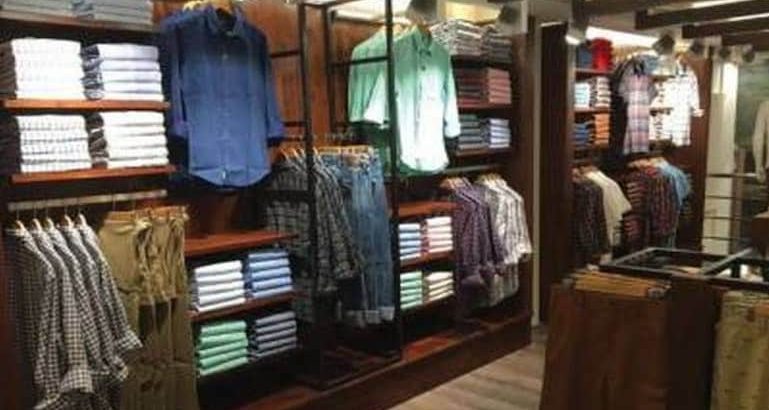STYLES COME AND GO. But India’s $100 billion apparel market remains as hyper-competitive as ever. Hundreds of brands are jostling for space on shop-shelves as they are on online shopping sites. With new products being launched across price-points, the competition has only intensified in the last few years. Staying in vogue isn’t easy.
At Aditya Birla Fashion and Retail (ABFRL), it hasn’t been easy going. The Pantaloons business, together with some others, has been dragging down the company’s performance. Now the management wants to unlock value from the Madura Fashion and Lifestyle unit and has decided to splitting the company into two. The Madura outfit, which accounts for the bigger share of the firm’s revenues and the bulk of its operating profits, too will be spun off into a separate listed entity. What will remain in ABFRL, including the value retail piece, are largely “non-cash flow generative” businesses.
The pace of revenue growth in the lifestyle segment, comprising four industry-leading top brands of men’s formal shirts and some casual brands, slowed from 63% in FY22 to 45% in FY23 on the back of a 40% contraction in FY21. But sales are poised to grow to 13% in FY25 from 8% last year. It’s a reasonably profitable business generating cash as also a good return on capital.
As Abneesh Roy, ED, Nuvama Institutional Equities, told FE, the lifestyle business–Madura Fashion and Lifestyle—is viewed as more exciting than the pure play retail business which includes Pantaloons. “The growth prospects for the lifestyle business are better than those for the retail business, which tends to be somewhat capital-intensive,” Roy says.
Vasihnavi Mandhaniya, who tracks the space at Anand Rathi, pointed out the management has focused both on premium and casual brands in the lifestyle segment, innovating and managing markdowns well. “It has been building brand extensions as a growth lever,” Mandhaniya observed, adding new categories such as the premium range of sneakers in Louis Phillipe have been launched.
The ABFRL management believes the restructuring would help bring in sharper focus “anchored on a differentiated strategy for the two business segments”. Although, as Ashish Dikshit, MD, ABFRL, observed, each of the businesses has always operated autonomously under respective CEOs, the new structure positions the businesses for sustained growth and value creation. Dikshit is probably right. The competitive landscape does call for a sharp focus and working
with numerous brands under one umbrella can be onerous. Indeed, ABFRL’s sloppy performance on the exchanges is an indication of its inability to get things going. In the two years, between January, 2022 and December 2023, the stock lost 18% in value during a time when the Sensex gained 24%. Some of this was of course, due to the after effects of the pandemic and the slowdown in consumer demand.
In fact in May last year, the management indicated that the slowdown seemed to be broad-based. The value and the masstige segments along with tier 2+ towns were facing more headwinds in the wake of inflationary pressures. Moreover, athleisure and lounge wear were seeing sluggish growth as more people returned to work at the office. An imminent recovery in the business as a whole didn’t seem possible at the time. Now the management must work on Pantaloon which was acquired in 2012. The business was struggling even before the pandemic hit by dull demand amidst keen competition.
A peer group analysis by Anand Rathi’s Mandhaniya reveals that the compounded annual growth (CAGR) in revenues betweenFY19-23 was 6.2% for Pantaloon compared with 33% for Trent; the operating profit during this period grew by 29% at Pantaloon compared with 47.4% at Trent. To be sure, the company has turned out a higher mix of private labels and also managed its costs. This together with a focus on full-price sales has helped it report in the range of 14-15.5% in the three years to March, 2023.
Analysts at Citi believe that much like Trent, which transformed itself with Zudio in 2016 after being a slow mover with Westside (227 stores only since the launch in 1998), Pantaloon too can revamp itself.The management has taken steps to make Pantaloon a more viable operation by shutting down non-performing stores, lowering discounts and reducing some fixed costs.
In eight years, Zudio has doubled the number of Westside stores at 460, with plans to add at least 100 more stores in the next few years, tapping small towns and cities. It remains a runaway success for Trent, helping the firm emerge as one of the most valuable retail stocks on the bourses. For ABFRL, Citi anticipates higher revenue growth on the back of value retail chains such as Style Up, though profitability could be lower as the footprint scales up quickly.
Having spent some `2,200 crore since 2012 on a clutch of acquisitions, mainly Pantaloon, and TCNS, ABFRL’s debt is now close to `2,800 crore. Even as the restructuring brings in better focus, it should make the companies more profitable. The brands must become resilient enough to withstand the competition. Else the business will stay as dowdy as it is.
